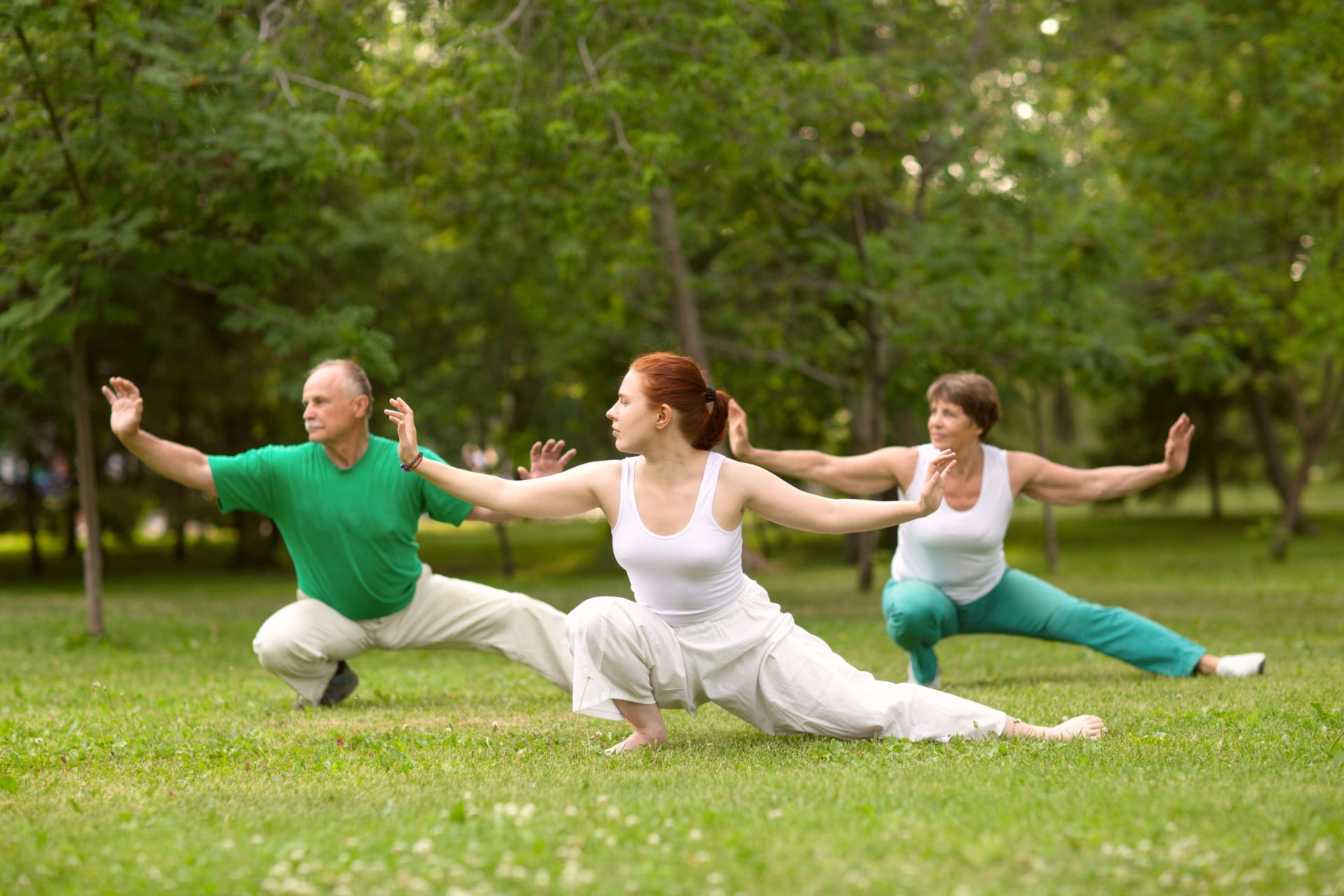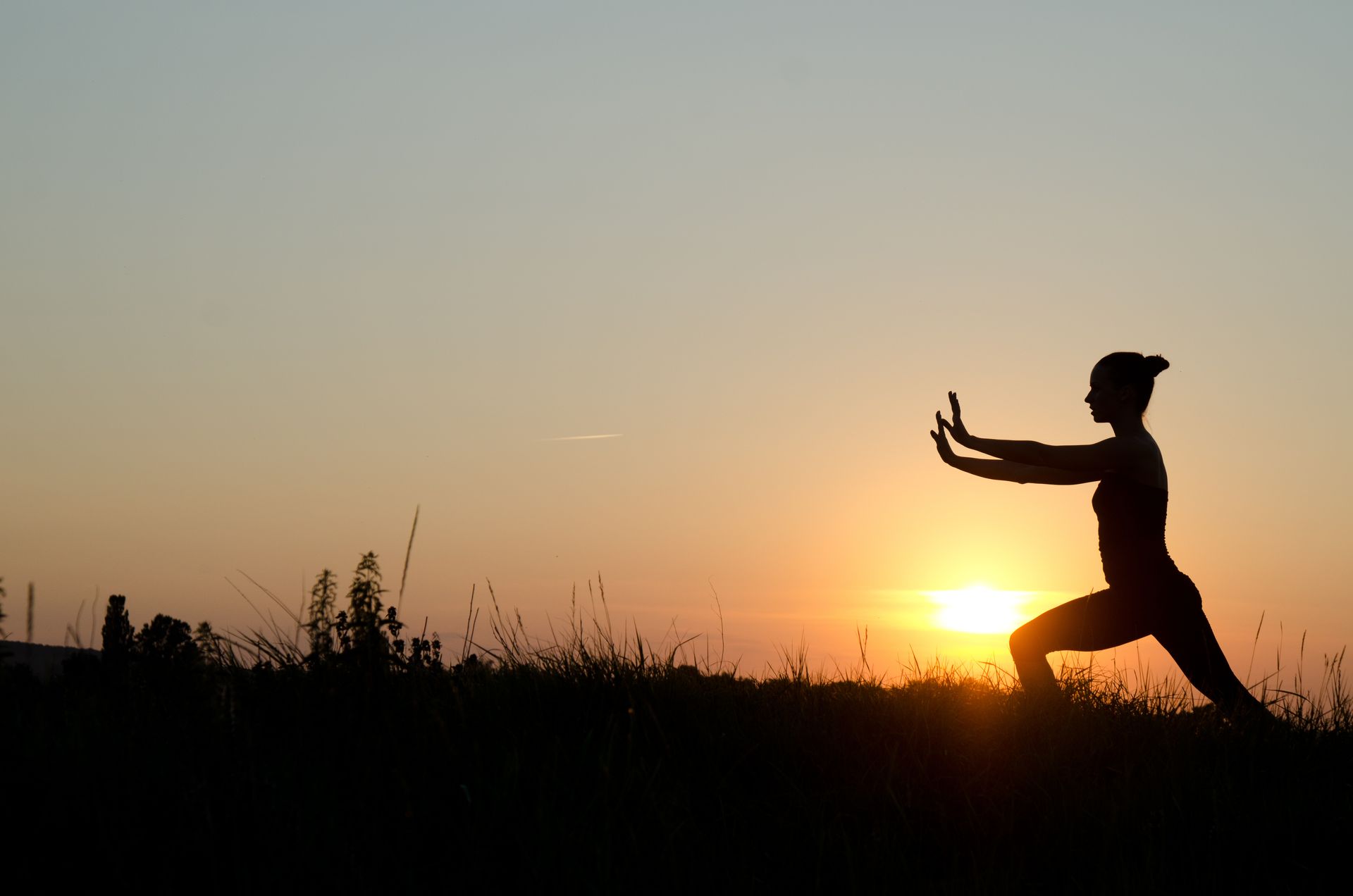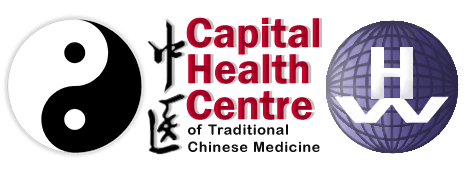Tai Chi and Qi Gong: Holistic Healing Through Ancient Chinese Practices
Tai Chi and Qi Gong are traditional forms of exercise in Chinese culture. They are related exercises that are offered at the Woden clinic, and can contribute to the holistic healing of clients as these exercises can improve your physical, mental, and emotional health.
Many of our clients turn to natural healing methods including TCM when they're ready to take an active role in their health journey. This style of practice requires clients to review their lifestyle, and fitness and activity for their long term health. TCM supports this mindset.

Why do people practise these exercises?
Tai Chi and Qi Gong both have distinguished patterns of exercise that are well popularised in Eastern and Western societies. Today, we see all ages pursuing these forms of exercise for different purposes, including: self defence, self development, health balancing, fitness, martial arts, mobility, flexibility etc.
Often, middle aged people with busy lives want to start Tai Chi or Qi Gong when they notice health concerns, chronic problems, or when they’re willing to try a fitness style to prepare for getting older, and in the prevention of potential future difficulties.
Are Tai Chi and Qi Gong beginner friendly?
When clients begin practising these exercises, they often say “I can’t do exactly what you did,” “I can’t balance enough,” or “I can’t remember the key movements.” However, these exercises are not simply a learning sequence, and what’s more important than following the sequences exactly, is your approach and mindset to the exercises. It is beneficial for clients to be in the moment, and focus their attention on their own body, rather than worrying about comparing their movements with others.
Clients come in all the time as beginners, continuers, or experienced people. Everyone is treated equally and performs similar movements, as qi responds the same way for everyone. Mindset is one of the most important parts of practising Tai Chi or Qi Gong, as connecting to yourself and your own body is key (regardless of your level of experience), to melt into the atmosphere and environment around you, and to feel grounded. You can reach a level of mindfulness when you are able to connect your mind to how your body is feeling.
Clients have found these forms of exercise to be very practical, simple, and convenient as you can practise in the clinic, at home, or anywhere that is quiet and comfortable, as the space required for these movements is very flexible.
What is the difference between Tai Chi and Qi Gong?
As Tai Chi and Qi Gong have become more popular, a commonly asked question from clients is “what is the difference between the two?” Both forms work with the balancing and cultivation of qi in TCM. Whilst both have similar associated health benefits, Qi Gong consists of breathing techniques, different postures, and the incorporation of meditation, while Tai Chi does focus on these aspects, it is primarily a martial art which focuses more on movement, balance, and power.
Tai Chi can also incorporate elements of Qi Gong, with a focus on movements and training that balances and connects the qi (which is also known as the qi method of Qi Gong).

How to become mindful when practising Tai Chi or Qi Gong
A practical way to become mindful, and connect your posture to your breathing follows a simple method:
- Treat Qi Gong and Tai Chi as any other type of exercise, and prepare for the activity by being mentally prepared to learn and to feel mindful, and by stretching etc.
- The classic, specific movements have the purpose of strengthening your energy, calming your mind, and improving your balance, and body harmony. Try your best to be open, mindful, and kind with yourself.
- Practitioners recommend that a daily activity and mindfulness qi approach will be beneficial to your overall health and wellbeing. This happens when you concentrate on your feelings and breathing, and be mindful with your actions, rather than feeling like you have to rush through your breathing and movements.
Tai Chi and Qi Gong can have benefits for the whole community in improving the balance and harmony of individuals, by targeting the physical, mental, and emotional aspects of health, in a holistic approach to healing.





